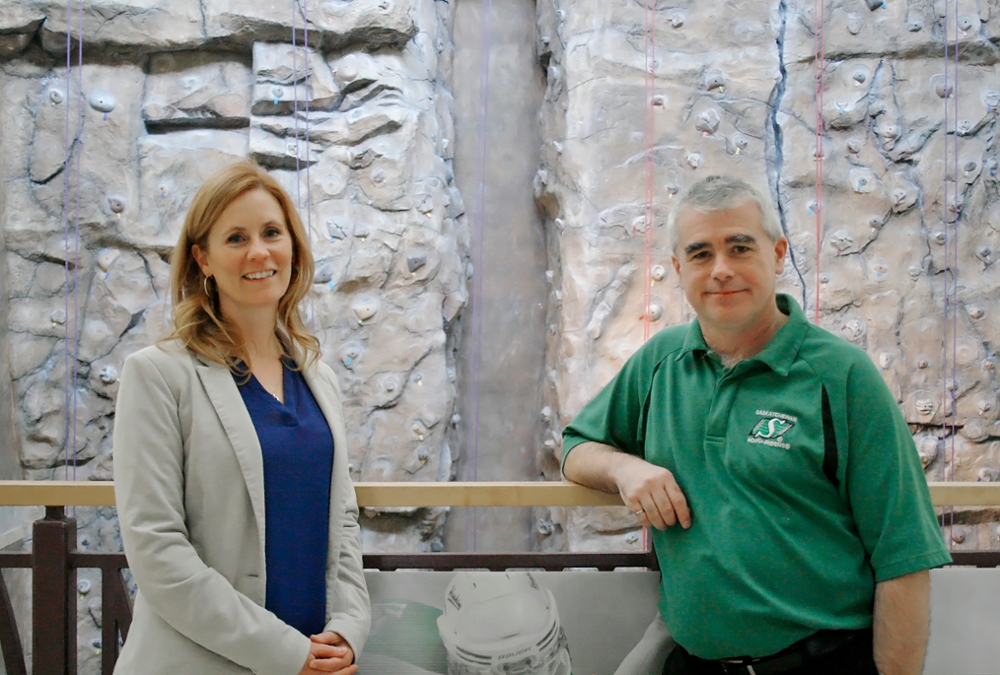
Undergrads in the Lab
Dr. Alison Oates and Joel Lanovaz, the co- directors of the Biomechanics of Balance and Movement Lab, offer U of S undergraduate students the chance to get first-hand research experience.
Over the years, College of Kinesiology professors Dr. Alison Oates and Dr. Joel Lanovaz have seen and appreciated the value of undergraduates in research. As co-directors of the Biomechanics of Balance and Movement Lab, Oates and Lanovaz are constantly working, interacting with and mentoring the undergraduate students on their projects. Every year, the lab, located on the third floor of the PAC, becomes a research home for as many as six students at any given time. Their tasks range from running the experiments, collecting and processing the data, and even interpreting and disseminating the results.
As faculty members who have been part of the undergraduate research community for several years now, both Lanovaz and Oates agree that undergraduates have a lot to offer to faculty and the UofS at large, and they stand to gain even more themselves for taking on a research experience early on in their degrees. “People sometimes underestimate what undergraduates can do,” Lanovaz believes, and this can include students themselves who might be hesitant to take on research. He encourages students to reach out to professors and ask them about their projects and interests. While the prospect of working along with your professors might take some getting used to, Oates reminds us that she and most of her colleagues love to share and discuss their research. It is, after all, what professors everywhere are trained to do and, more often than not, it’s the favorite part of their job.
What does it take to be a researcher at the undergraduate level? Lanovaz and Oates have both found that undergraduate students who say “yes” to research opportunities come out satisfied after getting hands-on experience and exposure to the research process. When it comes to being successful as a researcher, it’s not grades but curiosity that matters most. Students who are self-motivated learners and are not afraid to take the initiative or seek out new opportunities tend to thrive in a research environment. It’s not uncommon for students who worked on a project over the summer or throughout the year to become inspired to take it beyond the lab and down other avenues. Past students have presented their work at the USSU Project Symposium and international research conferences, while others turned their research into honours projects and publications. As Oates explains, “a lot of students surpass our expectations,” not just by becoming assets in the lab, but contributing to scholarship on a larger scale.
In the end, Oates and Lanovaz were both on the same page when it came to how they feel about undergraduate research. They encourage faculty members everywhere to integrate a greater research component in their classes and increase the visibility of research among their students, as well as opportunities to engage in it. Lanovaz feels that, in order to unlock the full potential of research for undergraduates, more funding should be available and greater efforts to recognize students who partake in it. Meanwhile, for Oates, what makes research with students so rewarding is not just the fact that it “pays off huge in the end”, but also gives her the chance to get to know her students better, watch them learn and grow, and see where research takes them in the years to come.

